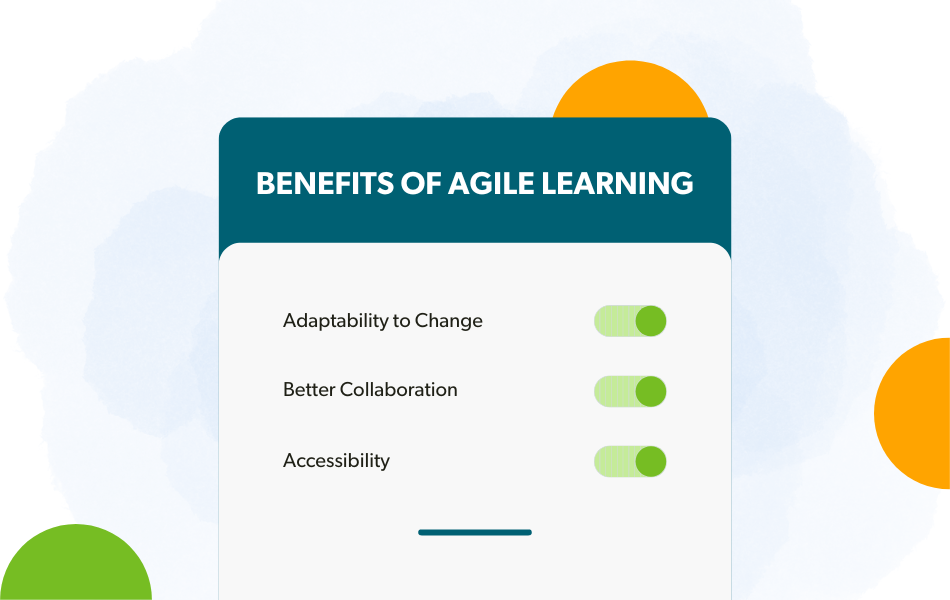-
- marketing agility
- Teams
- Organizations
- Education
- enterprise
- Articles
- Individuals
- Transformation
- Solution
- Leadership
- Getting Started
- business agility
- agile management
- going agile
- Frameworks
- agile mindset
- Agile Marketing Tools
- agile marketing journey
- organizational alignment
- Agile Marketers
- People
- Selection
- (Featured Posts)
- strategy
- agile journey
- Metrics and Data
- Kanban
- Resources
- Why Agile Marketing
- agile project management
- self-managing team
- Meetings
- Scrum
- agile adoption
- scaled agile marketing
- tactics
- scaled agile
- AI
- Agile Meetings
- agile marketing training
- agile takeaways
- Agile Leadership
- agile coach
- enterprise marketing agility
- Scrumban
- state of agile marketing
- team empowerment
- Intermediate
- agile marketing mindset
- agile marketing planning
- agile plan
- Individual
- Team
- Videos
- agile marketing
- kanban board
- Agile Marketing Terms
- agile transformation
- traditional marketing
- FAQ
- agile teams
- Agile Marketing Glossary
- CoE
- Scrumban
- agile
- agile marketer
- agile marketing case study
- agile marketing coaching
- agile marketing leaders
- agile marketing methodologies
- agile marketing metrics
- agile pilot
- agile sales
- agile team
- agile work breakdown
- cycle time
- employee satisfaction
- marketing value stream
- marketing-analytics
- remote teams
- sprints
- throughput
- work breakdown structure
- News
- agile brand
- agile marketing books
- agile marketing pilot
- agile marketing transformation
- agile review process
- agile team charter
- cost of delay
- hybrid framework
- pdca
- remote working
- scrum master
- stable agile teams
- stand ups
- startups
- team charter
- team morale
- user story
- value stream mapping
- visual workflow

As new technologies and challenges disrupt nearly every industry, consumer behavior is changing as a response. To keep up with this frantic pace, picking up new skills in our internal teams and adjusting to those ever more frequent changes is a must.
But knowing that you need to continuously find ways to improve and actually doing it are two very different things. That’s why so many professionals have turned to Agile learning to help them stay on top of their work in changing realities.
Many know this process of continuous learning as Kaizen.
So let’s understand just how Agile learning can be the key element you need to achieve Kaizen and through it, overall business success.
What Is Agile Learning?
Agile methodology uses short work cycles to complete projects and make necessary process changes. That constant feedback loop in which all participants look for opportunities to optimize drives improvements and innovations that result in increased value to customers in a timely way. This build-measure-learn process is what we call Agile learning.
We can contrast this with traditional learning styles where education is more rigid: learning is concentrated in structured bursts in which more senior people lead and more junior people follow. So learning may happen only in occasional, formal training environments and it will be less likely that knowledge obtained from less senior people is shared.
In practice, this may be something like having senior people share their knowledge in structured presentations once or twice a year. Those senior figures are the only ones whose knowledge is shared and they decide what this learning experience will prioritize. In this way, traditional learning reinforces hierarchies while limiting opportunities to obtain and share knowledge.
With Agile learning, many teams might have a retrospective meeting more frequently to discuss the work they recently completed and look for ways to optimize. This approach to learning incorporates continuous feedback loops to frequently iterate on existing processes, takes into account more diverse inputs and represents a pillar of collaborative working environments.
Importantly, through Agile learning, any novelty that is introduced, whether it's a new process or a new skill, is based on the actual needs of the team rather than leadership's assumption of what is required.
Why Agile Learning Is So Important
According to Elearning industry, 61% of organizations experience three or more major changes (in their processes, structure, focus etc.) every year, but only 17% of companies consider themselves highly effective at managing these changes.
Being able to learn and adapt as you go is an essential element of reaching the goal of continuous improvement. Fortunately, Agile learning significantly raises your chances of successfully adjusting to the constant waves of change by creating structured ways to routinely adjust and evaluate what’s working.
Without this kind of official, open, and well-structured learning, it becomes far more difficult to embrace new skills and de-risk your approach as you undertake it. Agile helps create a safe environment for teams and individuals to experiment, learn, and grow when they feel they need to, not when leadership decides it's crucial to success.
Benefits of Agile Learning
Organizations that use an Agile learning model instead of a traditional learning model have the potential to reap long-term and short-term benefits that can be felt on all levels of the structure.

Adaptability to Change
By creating a pattern for regularly acquiring new concepts and skills, an Agile learning model assures that organizations are prepared to react to changes occurring internally, in their industry or globally. Not only does Agile learning support the development of a variety of skills, but more importantly, it helps build a willingness to take chances and maintain an open mind, which, in turn, can nurture innovation rather than just efficiency.
Better Collaboration
Since Agile learning encourages communication and collaboration, those who practice it are encouraged to ask questions, give feedback, and actively work together on projects where they wouldn't usually partner up. Agile learning fosters a trusting environment by encouraging open communication, mutual support and greater exposure to a variety of different subjects, rather than siloed expertise.
It also introduces new perspectives and ideas by allowing individuals who may have been excluded in the past an equal voice. This enhances personal learning and development as well as total team effectiveness.
Accessibility
Agile learning empowers individual team members to learn at any time, from any location, using any current inputs they decide are relevant, fostering a culture of continuous learning both inside and outside the workplace. Where in traditional learning environments, individuals can access continuous improvement opportunities when they are created for them, Agile learnings empowers individuals to create and monitor build-measure-learn feedback loops in any aspect of their work.
Agile Learning Unlocks Kaizen (Improvement)
Of all the amazing benefits that Agile learning brings to teams and organizations, the ultimate one is achieving a state of Kaizen by encouraging contributors to work towards perfection.
The Kaizen Concept Explained
Initially, Kaizen was used in the manufacturing industry to improve productivity in factories, inspire worker accountability and purpose, reduce errors, and decrease waste. It’s an essential element of lean manufacturing.
The word Kaizen is a combination of two Japanese terms meaning "good change" or "improvement". But because of its connection to lean methodology, Kaizen has come to mean "continuous improvement" in the broad sense of the term.
Continuous improvement in Kaizen is based on the premise that small, ongoing improvements can produce significant results. The concept works great both on an organizational and individual level.
Kaizen incorporates identifying problems and opportunities, coming up with solutions, implementing them, and repeating the process. This is often broken down into a seven step cycle that continually works towards identifying and applying improvements.
.png?width=950&height=600&name=December%20Article%20Graphics%20(1).png)
How to Build an Agile Learning Culture That Promotes Kaizen
Training and learning can be less rigid, more rapid, and ultimately more effective if you apply Agile learning across the organizations. More importantly, it helps in the creation of a broader Agile culture. This means an environment where people feel heard, valued, and supported enough to innovate.
Continuous Learning
Training opportunities shouldn't be few and far between. Instead, professionals need an environment where lifelong learning is not only valued but embraced. The only way to maintain long-term engagement, fulfillment, and the pursuit of excellence is through the creation of opportunities for continuous training in the workplace. Accessibility to self-paced modules and analytics tools can go a long way in encouraging team members to practice always-on learning.
Continuous Communication and Collaboration
Departments shouldn’t be working in silos and operating independently of one another. Daily standups where everyone shares what they're learning and the obstacles they are facing are an excellent way to promote transparency between units. This element of Agile learning improves team collaboration and communication, which, in turn, improves the trust between functions.
Peer Learning
Peer learning is another continuation of cross-team collaboration. It’s about learning from your peers instead of just from formal institutions, unlocking a tremendous amount of unique knowledge that those institutions just can't offer.
With peer learning, you can recognize your unrealized potential and empower yourself to teach others about topics in which you may have particular knowledge. You can also seek new information from your fellow marketers. Peer learning can also include using outside expertise as guest experts.
You can ask your team who possesses particular expertise to train the others. You can even use videos and other technologies to learn from peers who work for different companies or who are not co-located.
These techniques increase the effectiveness of learning by allowing you to find internal educators rather than relying on external sources only.
Before proceeding to learn what the first step towards achieving Kaizen is, why don't you take a second to get our Agile Business Quick Start Guide?
The First Step to Achieving Kaizen
Agile learning can be applied in a variety of ways to achieve that much-vaunted state of kaizen inside your organization. The build-measure-learn mentality that this approach encourages removes the guardrails of traditional learning and enables professionals in all kinds of industries, in organizations of different sizes, and with different levels of experience to share the benefits of continuous improvement.
Achieving a state of kaizen starts with experimenting with different sources of data that can contribute to incorporating new learnings. Designing appropriate tests and knowing which data to rely on relies on in-depth knowledge of Agile principles and values. Register for an online course on Agile to lay the groundwork for appropriate experiments that lead to Agile learning and, ultimately, a state of organizational kaizen.
Topics discussed
Improve your Marketing Ops every week
Subscribe to our blog to get insights sent directly to your inbox.


